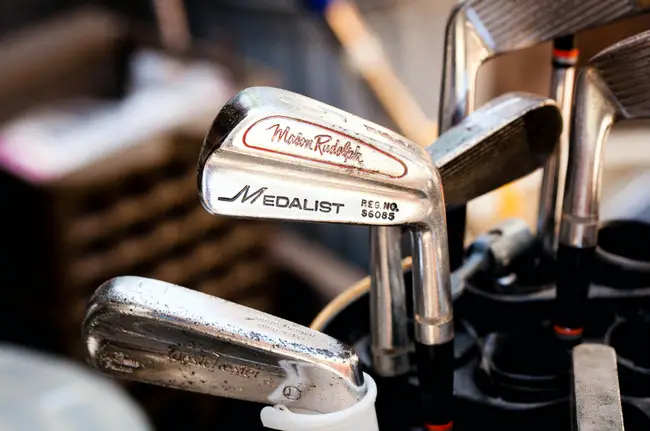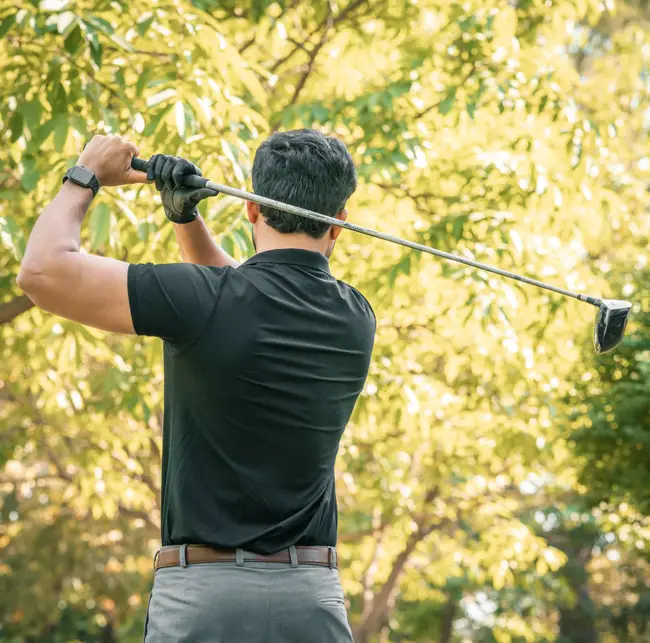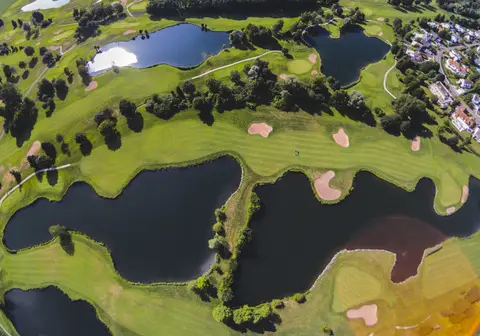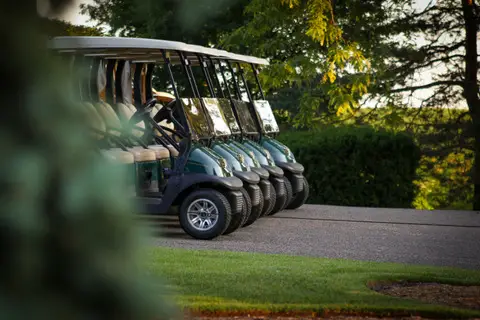Top 10 Tips for Buying Second-Hand Golf Clubs: Save Money and Improve Your Game
Buying second-hand golf clubs can be a great way to save money while still getting quality equipment that helps improve your game. However, it’s important to know what to look for and how to find the best deals when purchasing used clubs. Here are our top 10 tips for buying second-hand golf clubs that will help you save money and improve your game.
Once you determine what type of clubs will be suitable for your game and what to look for to make sure you are buying quality clubs, you can head online to find where to buy used golf clubs at the best possible prices.


Match Clubs to Your Skill Level
Before shopping for second-hand golf clubs, it’s essential to assess your own skill level. There are clubs designed for beginner high handicappers as well as ones that cater to more skilled golfers.
Knowing your skill level will help ensure you purchase the right set of clubs for your game. For instance, when it comes to choosing irons, there are blades and cavity back irons. Blade irons are typically preferred by highly skilled golfers who have consistent ball-striking abilities and seek maximum control and workability from their irons, whereas cavity-backed irons offer more forgiveness on mishits for beginner golfers compared to blade irons but with less shot-shaping capabilities.
Another thing you should consider when looking for clubs is club shaft flexibility. The club shaft’s flex should match your swing speed, as this will help you achieve optimal distance and accuracy.
For beginner golfers, it’s generally recommended to choose golf clubs with a regular flex. The flex of a golf club refers to the amount the shaft bends during the swing and this affects the club’s performance, particularly in terms of distance and accuracy.
A regular flex shaft can help promote a smoother transition from the backswing to the downswing. Stiffer shafts, such as those with a stiff or extra stiff flex, require more swing speed and control, which can be challenging for novice golfer.
Determine Your Budget
Setting a budget is crucial when buying second-hand golf clubs. Golf equipment can range widely in price, so determine how much you’re willing to spend before you start shopping. This will help you avoid overspending and allow you to focus on clubs within your price range.
Having a set budget will also prevent you from being talked into clubs you can afford by a pushy salesperson or being tempted by clubs that simply look great but may not be suitable for your personal game.
Once you set a budget, do a bit of research online to see what brands of clubs you are interested in are going for both new and used so you know which ones you can ask for or seek out online when you go to purchase that will be in your price range and know what you should be paying so you don’t get ripped off. This will also help you not waste time viewing or trying out clubs that you won’t be able to afford.
Research Club Brands and Models
Take the time to research different club brands and models. Some clubs are better suited for beginners, while others cater to more advanced players. Reading reviews from other golfers and gathering information about various clubs will help you make an informed decision when purchasing second-hand golf clubs.
Engage in golf forums and online communities whether through Facebook or elsewhere where golfers often share their experiences and insights. These platforms provide valuable firsthand feedback and recommendations on various club brands and models.
Real user experiences can provide valuable perspectives on the performance, durability, and overall satisfaction with specific club models.
Check the Club’s Condition
When buying second-hand golf clubs, it’s important to closely inspect the club’s condition. Look for signs of wear, such as dents, scratches, or rust. While some wear is normal, excessive damage could indicate that the club won’t perform well on the course. Be sure to check the clubface for worn grooves, as this can impact your shot’s spin and control.
Check the shaft for any cracks, dents, or noticeable bends. Run your hand along the length of the shaft to feel for irregularities. Examine the club grips for any signs of separation, fraying, or smooth spots or you may end up needing to get these quickly replaced which will come at a considerable cost if purchasing a set of clubs that all need new grips.
Pay Attention to Club Length
The length of your golf clubs should match your height and arm length. Using clubs that are too long or too short can negatively impact your swing and overall game performance. When shopping for second-hand clubs, make sure the length is appropriate for your body measurements.
The length of a golf club influences your posture and address position. If the club is too long or too short for your height and swing characteristics, it can lead to an incorrect setup, resulting in compromised swing mechanics and inconsistent ball-striking.
When clubs are the correct length, you can maintain a natural grip and posture, facilitating a more fluid and repeatable swing motion. If clubs are too long, they may be challenging to swing with the necessary speed and control, whereas if clubs are too short, you may not be able to generate optimal power. Clubs with the correct length for your body type allow you to achieve the right balance between control and clubhead speed.
Verify the Club’s Authenticity
Unfortunately, counterfeit golf clubs are a reality in the second-hand market. Counterfeit clubs can be convincing, but they often lack the performance, quality, and durability of genuine golf clubs.
To avoid purchasing fake equipment, always verify the club’s authenticity. Look for brand logos, serial numbers, and other identifying marks that indicate the club is genuine. Counterfeit clubs may have noticeable differences in the logo, branding, paintwork, or alignment. Pay attention to details such as font style, colors, and finishing.
Examine any labels, stickers, or graphics on the shafts to ensure they are intact and not peeling off. This can be an indicator of the club’s authenticity. When buying used clubs or clubs without original packaging, ask the seller for proof of authenticity in the form of receipts, certificates, or any other documentation that confirms the club or clubs are legit.
Purchasing from a reputable seller whether online or in a physical store will greatly reduce your chances of buying knockoff clubs.
Ask About the Club’s History
When buying second-hand golf clubs, it’s helpful to know the club’s history. Ask the seller about the age of the golf club or clubs, how often they were used, and if any repairs have been made. This information can give you a better understanding of the club’s overall condition and performance.
By knowing the history of the used clubs, you can evaluate whether the asking price is fair and reasonable, keeping in mind that you will likely pay more for clubs with a documented history of proper maintenance.
Learning about the history of the clubs can inform you about any customizations or alterations that have been made. This includes changes to the grips, shafts, or clubhead modifications. Knowing these details allows you to assess whether the customisations suit your preferences and playing style.
Consider Purchasing a Set
While it may be tempting to purchase individual clubs, buying a complete set can save you a lot of money in the long run. Sets typically include a variety of clubs designed to work together, which can help improve your overall game. Additionally, purchasing a set may provide a better value compared to buying individual clubs separately.
When buying golf clubs new, you usually have to purchase a set of irons, and then have to purchase a driver, woods, hybrids, specialised wedges, and a putter each separately. However, when buying used, you can often find entire sets with all these clubs being sold together. They sometimes even come with a golf bag.
Purchasing a set that has already been put together can save you a great deal of time having to put a set together yourself, and more often than not, all the clubs within the set will match in terms of what skill level they are designed for. It would be odd for example to have a driver geared toward a pro golfer matched up with irons designed for beginner golfers.
If you’re buying a set of irons, check for consistency in the condition of all the clubs. Ensure that they have matching models, shafts, and grips. Pay attention to any missing or mismatched clubs in the set and avoid paying extra for a set that includes a bunch of clubs you personally will rarely use or you will just be wasting money.
Test Out Clubs
Whenever possible, try out golf clubs before buying them. Testing will give you a better sense of how the clubs perform and feel. Many stores have demo clubs available for customers to try out through things like hitting bays, simulators, or indoor putting greens.
Take advantage of these facilities to test the clubs by hitting balls and evaluating factors such as feel, distance, forgiveness, and shot trajectory. Remember, you can also test clubs in a store but then purchase online if you find better deals there.
If you have friends or golfing partners who own clubs similar to the ones you’re interested in, you can ask to borrow or try out their clubs during a round of golf. Alternatively, you could also rent clubs that next time you head to a golf course to test different brands and models before committing to a purchase.
While rental sets may not always be the latest or highest-end clubs, they can still give you an idea of their performance and help you make an informed decision.
Shop Around
Finally, don’t be afraid to shop around when looking for second-hand golf clubs. Check out local golf stores, online marketplaces, and even garage sales to find the best deals. By comparing prices and exploring different options, you’re more likely to find quality second-hand clubs at a great price.
Buying second-hand golf clubs can be an excellent way to save money and improve your game. By following these top 10 tips, you can ensure you’re making the best possible decision when purchasing used golf equipment. Happy shopping, and may your new clubs help you hit the green with confidence.




























